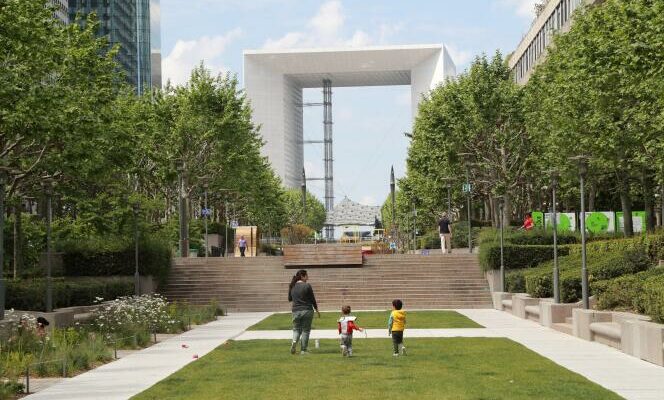Ten thousand steps and more. We know that green spaces are good for morale… and health. Research has shown that being in contact with nature during childhood is associated “neurocognitive and sociobehavioral development, mental well-being, reduced risk of overweight or obesity, lower blood pressure and higher physical activity”detail Belgian and Dutch researchers in the American monthly magazine JAMA Network Open January 4. This team also looked at the effect of greenery on bone health, by studying 327 children aged 4 to 6 years from the Belgian cohort. Birth Environment (Environmental Influence on Early Aging).
Conclusion of this work: participants exposed to more green spaces, for example gardens and parks in urban areas, or fields in rural areas, within a radius of 300 meters to 3,000 meters around the main residence, presented significantly higher bone mineral density. For example, it is increased by 25% among toddlers living less than 500 meters from an area rich in green spaces, particularly those called elevated, with vegetation exceeding 3 meters in height.
“It is clear that green spaces are good for children, and this study is interesting, but the results must be taken with caution due to significant bias”tempers the professor of pediatric orthopedics Franck Accadbled, surgeon at Toulouse University Hospital. “On the one hand, the level of physical activity was not assessed, only sedentary lifestyle was estimated with daily screen time. On the other hand, bone density was measured non-invasively but with a method which is not the reference one, two-photon absorptiometry.continues this surgeon, also co-director of a interuniversity diploma in pediatrics and sport with Doctor Stéphane Tercier, sports doctor at Lausanne University Hospital, Switzerland, launched at Toulouse University Hospital in September 2023.
Physical activity at the forefront
The researchers in the Belgian study preferred a technique without radiation, the calculation of bone density on the forearm using quantitative ultrasound measurements. Limitations that the authors of the study recognize, also emphasizing that they do not have data on the use, by children, of surrounding residential green spaces, nor on accessibility and safety. The study highlights that “increased physical activity has been hypothesized to be one of the pathways underlying the beneficial health effects of exposure to green spaces”.
You have 30% of this article left to read. The rest is reserved for subscribers.
